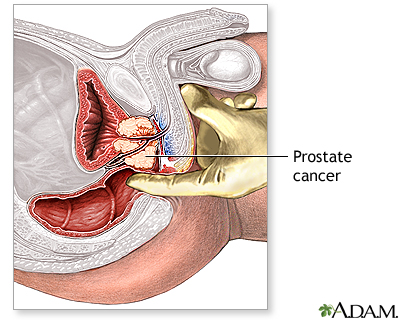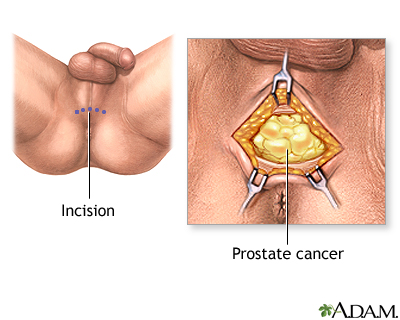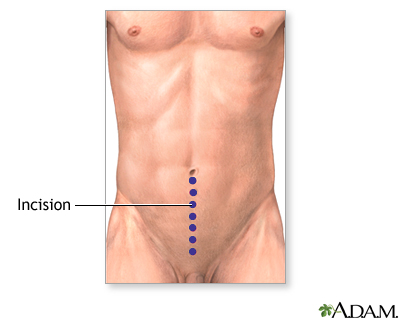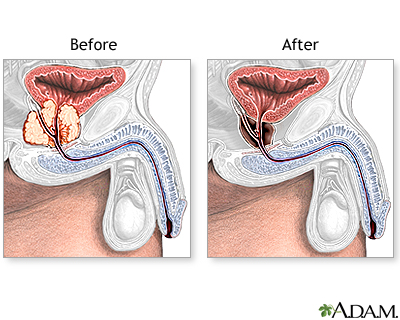Prostatectomy
| Normal anatomy |
| The prostate gland is a male organ that surrounds the urethra. It secretes fluid that mixes with sperm to make semen. The urethra carries urine from the bladder, through the prostate gland to the penis.
|
| Indications |
| With the exception of skin cancer, prostate cancer is the most common type of cancer among men in the United States. Early detection may result from a blood test called a PSA (prostate-specific antigen), and/or a digital rectal exam. The digital rectal exam checks the rear surface of the prostate gland for any abnormalities. A lump or hardness found during the exam might be a sign of prostate cancer. |
| Incision |
|
There are three main surgical methods used for removing the prostate gland. The oldest method is called the "perineal" method. An incision is made in the perineum, which is the area between the base of the scrotum and the anus. This approach has largely been replaced by newer operations. |
| Incision |
|
The more common surgical method of prostatectomy is called the "suprapubic" approach. An incision is made in the abdomen, just below the navel, which extends downward to the pubic bone. In a newer approach, laparoscopic surgery allows the surgeon to remove the prostate through much smaller incisions, with or without the assistance of a robot.
|
| Normal |
|
The suprapubic and laparoscopic approaches allow for removal of the lymph nodes and the ability to perform a nerve sparing modification that might prevent erectile dysfunction after surgery.
|
| Aftercare |
|
Patients with prostate cancer may need additional therapy after their surgery. Results depend on the extent of their disease and the response of the tumor to resection (removal). |

|
Review Date:
12/23/2011
Reviewed By:
Harvey Simon, MD, Editor-in-Chief, Associate Professor of Medicine, Harvard Medical School; Physician, Massachusetts General Hospital. |
The information provided herein should not be used during any medical emergency or for the diagnosis or treatment of any medical condition. A licensed medical professional should be consulted for diagnosis and treatment of any and all medical conditions. Links to other sites are provided for information only -- they do not constitute endorsements of those other sites. © 1997-
A.D.A.M., Inc. Any duplication or distribution of the information contained herein is strictly prohibited.








